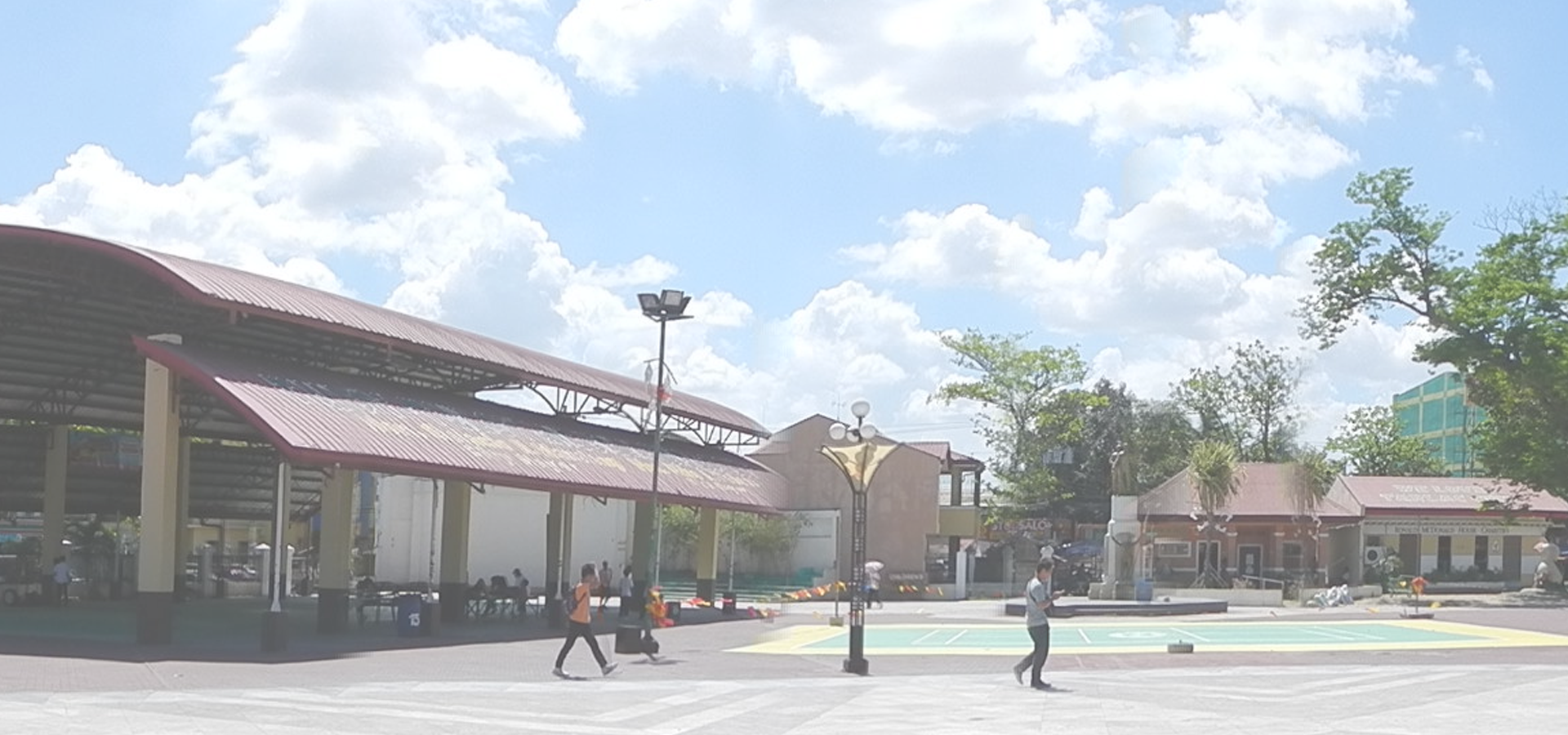La Paz, Province of Tarlac, Central Luzon Region, Philippines
🇵🇭 La Paz, officially the Municipality of La Paz (Balen ning La Paz; Bayan ng La Paz), is a 2nd class municipality in the province of Tarlac, Philippines.
History The early history of La Paz needs to be clarified. Legends state that an old pueblo called "Cama Juan" was situated along the bank of the Chico River, bordering the province of Tarlac and Nueva Ecija. When the Chico River overflowed during a storm, a great flood swept the entire pueblo during the night. The flood is said to have devastated the area, claiming many lives.
This forced the inhabitants of "Cama Juan" to evacuate. The old site (Cama Juan) is known as "Balen Melakwan" or "Abandoned Town".
The inhabitants chose a field of evergreen grass and shrubbery on which to rebuild, which they named "Matayumtayum".
Towards the end of the nineteenth century, Francisco Macabulos and Captain Mariano Ignacio selected a more centrally located site for the future town to be known as La Paz. This existed only as a barrio of the town of Tarlac until 1892, when it was separated from the latter and rechristened in honor of its patron saint Nuestra Senora de La Paz y Buen Viaje. Its emergence as a new town gave its citizens a chance to run their own government with Martin Aquino as the first Governadorcillo.
La Paz was made the first seat of the revolutionary government of the province of Tarlac during the Spanish regime with Gen. Francisco Makabulos as its first provincial governor.
Geography La Paz lies in the south-east portion of the province of Tarlac, 130 km (81 mi) from Metro Manila, 19 km (12 mi) from the provincial capital (Tarlac City) and 77 km (48 mi) from the regional centre (San Fernando City aka San Fernando, Pampanga). It is bounded on the north by the town of Victoria, on the east by the Province of Nueva Ecija, on the south by the town of Concepcion and on the west by Tarlac City.
The municipality has a total land area of 11,433 hectares (28,250 acres) which represents 2.34% of the entire provincial area. La Paz is politically subdivided into 18 barangays, of which barangays San Isidro and San Roque are considered as urban areas and the rest of the barangays are considered rural areas.
Barangays La Paz is politically subdivided into 22 barangays: Each barangay consists of puroks and some have sitios. • Balanoy • Bantog-Caricutan • Caramutan • Caut • Comillas • Dumarais • Guevarra • Kapanikian • La Purisima • Lara • Laungcupang • Lomboy • Macalong • Matayumtayum • Mayang • Motrico • Paludpud • Rizal • San Isidro (Poblacion) • San Roque (Poblacion) • Sierra.
Economy: Tourist Industry The feast of Nuestra De Seṅora De La Paz every January 23 to 24. Other tourism attractions in the town include Macabulos ancestral house, Nuestra Seṅora De La Paz Church, and Chico River Grill Station.
Transport The municipality has an approximate total road network of 78.863 km (49.003 mi) which are classified into four (4) categories, namely: national, provincial, municipal and barangay roads.
The barangay road network has an approximate length of 49.264 km (30.611 mi). The roads are paved with either concrete, asphalt, gravel or dirt. The gravel and dirt roads have a total length of 42.794 km (26.591 mi).
La Paz is the northern terminus of the Subic–Clark–Tarlac Expressway (SCTEx) where it connects with Tarlac–Pangasinan–La Union Expressway (TPLEx) and Central Luzon Link Expressway (CLLEx).
Several buses from Metro Manila going Nueva Ecija passes through the town via Subic–Clark–Tarlac Expressway (SCTEx).
Points of interest • (F-1790) Shrine of Our Lady of Peace and Good Voyage (Nuestra Señora de la Paz y Buen Viaje), La Paz 2314 Tarlac, Philippines (Titular: Our Lady of Peace and Good Voyage, Feast day, January 24; Former Parish Priest: Father Ramon Capuno under the Roman Catholic Diocese of Tarlac; Pilgrims seek healing; Vicariate of Immaculate Conception (Victoria, Tarlac) Vicar Forane: Father Vely Lapitan.
Asia/Manila/Province_of_Tarlac

La Paz has a population of over 68,952 people. La Paz also forms one of the centres of the wider Tarlac Province which has a population of over 1,503,456 people.
To set up a UBI Lab for La Paz see: https://www.ubilabnetwork.org Twitter: https://twitter.com/UBILabNetwork
🇵🇭 Tarlac City 15.481
🇵🇭 Cabanatuan City 15.491
🇵🇭 Cabanatuan 15.493
🇭🇳 San Pedro Sula 15.5
🇨🇳 Changshu City 120.753
Locations Near: La Paz 120.729,15.4431
🇵🇭 Zaragoza 120.793,15.449 d: 6.9
🇵🇭 Tarlac City 120.6,15.481 d: 14.4
🇵🇭 Concepcion 120.654,15.325 d: 15.4
🇵🇭 San Antonio 120.853,15.308 d: 20.1
🇵🇭 Guimba 120.765,15.661 d: 24.5
🇵🇭 Talavera 120.919,15.584 d: 25.7
🇵🇭 Cabanatuan City 120.968,15.491 d: 26.2
🇵🇭 Gapan 120.949,15.311 d: 27.8
🇵🇭 Cabanatuan 121.002,15.493 d: 29.8
Antipodal to: La Paz -59.271,-15.443
🇧🇷 Tangará da Serra -57.491,-14.621 d: 19803.2
🇧🇷 Vilhena -60.11,-12.708 d: 19697.7
🇧🇷 Várzea Grande -56.139,-15.652 d: 19678.8
🇧🇷 Cuiabá -56.096,-15.596 d: 19674.5
🇧🇷 Corumbá -57.65,-19 d: 19583.7
🇧🇷 Lucas do Rio Verde -55.917,-13.067 d: 19567.3
🇧🇷 Cacoal -61.447,-11.439 d: 19511.5
🇧🇴 Santa Cruz de la Sierra -63.186,-17.784 d: 19523.4
🇧🇴 Santa Cruz -63.183,-17.8 d: 19522.7